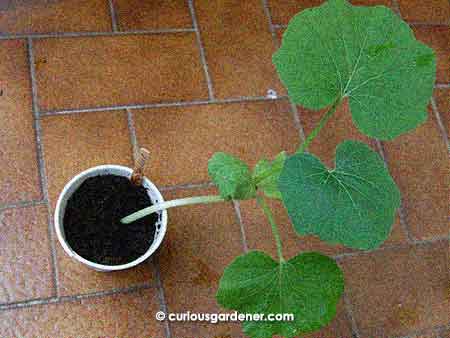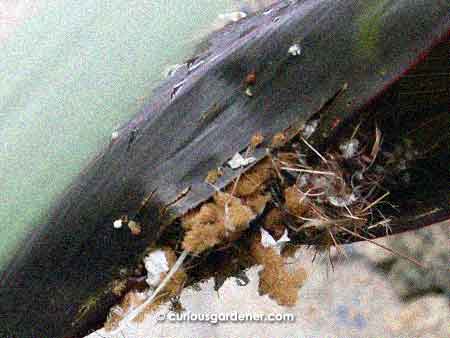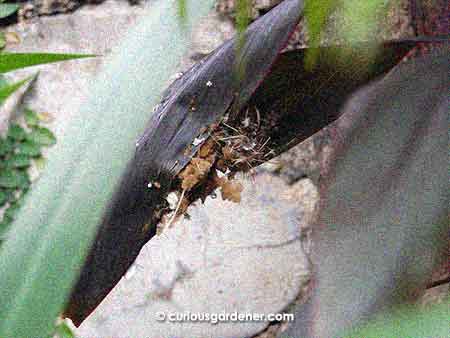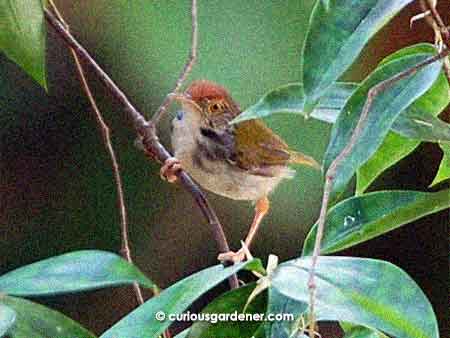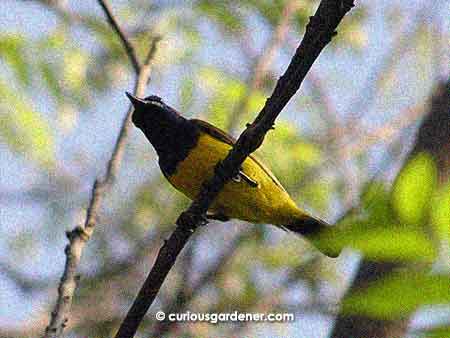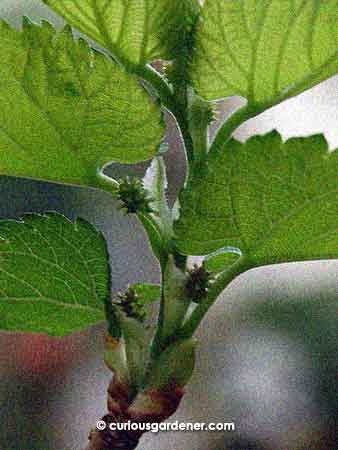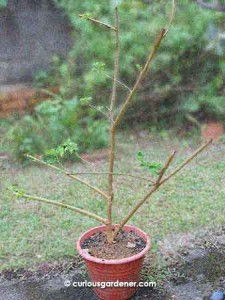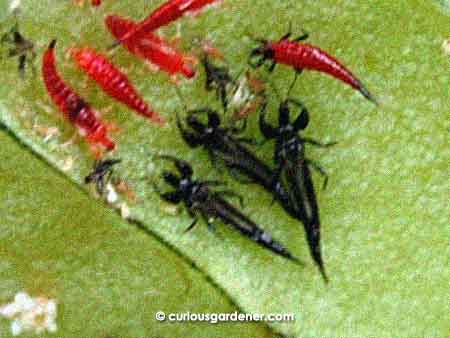The pumpkin plants currently growing in our garden seem to have lost momentum in their growth. The stems aren’t growing as rapidly as before, and the leaves have been getting smaller and smaller. Since Novice Gardener has been successful in growing some pumpkins in her garden – and some of them are growing in pots, as are mine – I had to go and take a look at the pumpkin plants in her garden and try to get some tips to help our plants.
Oh yes, and to pick up a new pumpkin seedling – the Australian Blue! ![]()
Well, what I saw was a few pumpkin vines happily growing along the length of her garden. Some were indeed growing out of pots, but I had my suspicions of whether they had taken root through the pots and into the garden because they were such long, strong vines.
Closer inspection also showed me that pumpkin vines take root along their stems, as do sweet potato plants, so maybe it didn’t matter whether they’d taken root through the pot after all. What they need is to grow on the ground, not from a pot and restricted from roaming, like I’ve been doing.
I know that The Weeds practice container gardening and have successfully grown a butternut pumpkin, but I am not as vigilant a gardener as they are – I like to provide the best possible conditions and then depend on Mother Nature to get things done in the garden.
So, I am going to clear up Phase 1 of my sweet potato patch that doesn’t seem to have done much other than grow vines and leaves and become a bit of a haven for the birds and our dogs, and plant the pumpkin plants there instead.
I hope we get more pumpkins from this allotment than we have sweet potatoes (nil, unless I unearth some when clearing the patch) – although we have harvested young sweet potato leaves a few times for cooking. It’s not quite worth the amount of land just for those few leaves, though.
Novice Gardener has assured me that pumpkin plants will keep producing lots of fruits, and after observing how they grow in her garden, I believe just a bit more. The proof, though, will be in the fruits. I can’t wait; the first pumpkin from Novice Gardener was really sweet and tasty, and I’d love to have our own supply soon!
© 2012 curiousgardener.com All rights reserved.

